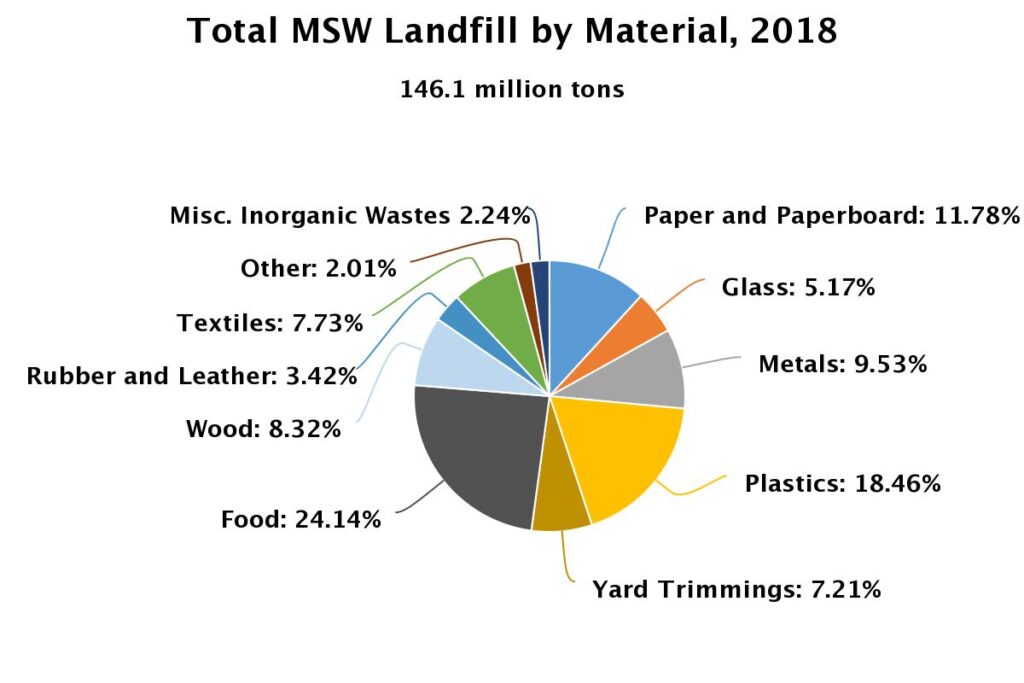Is your waste reduction strategy optimized for your remote workforce?
Corporate waste reduction strategies are a key part of sustainability initiatives, with many prominent companies – from Microsoft to Unilever – pursuing Zero Waste goals.
These strategies tend to focus on product manufacturing and distribution, as well as packaging. Rightfully so, since 80% of product related waste is established during the design phase. However, operational waste also makes up a significant portion of many companies’ overall footprint – and the composition of that footprint has changed significantly over the past three years.
According to a Pew Research Center 2022 survey, 59% of workers whose jobs can primarily be done from home are working from home all or most of the time. Compare this to 23% before the Covid-19 pandemic. This trend looks like it’s going to continue, as more than three quarters of those working from home say that they would like to continue doing so, or at least, stay within a hybrid pattern of more than half the week at home.
So, how does this impact your Scope 3 emissions reporting?
More employees working from home means less people eating in cafeterias, using corporate printers, and specifically, for the purposes of this post, making waste in a centralized location where it can be recycled, composted, diverted, and almost as important – measured.
The needs of employees have not gone away. They have merely shifted to the home office setting. But that impact is not being captured by today’s metrics because the correct data are not being gathered. Measuring waste hauling data from corporate owned facilities is far simpler than tracking the waste footprint of a distributed workforce across a diverse residential landscape. It may even seem, well, almost impossible.
Seeing through the fog
According to a study of 20 companies conducted by Reuters, only half of the brands surveyed accounted for at-home workers in their carbon emissions reporting. Those that did primarily accounted for the impact of commuting and energy use, opting instead, to offset the calculated emissions and call it good.
As you may have guessed, renewable energy offsets are not an analogous solution to cover the waste footprint of home offices. There is a high risk of this impact being overlooked entirely, as it is unclear whether waste is considered to the same degree in these calculations as it would be in a corporate facilities’ footprint. This is especially pertinent since, according to the Environmental Protection Agency (EPA), U.S. municipal solid waste (MSW) only saw a 32 percent recycling and composting rate in 2018, which falls far short of the 90+ percent waste diversion goals of many notable company operations, such as Microsoft, Apple, and more. A full 50 percent of MSW was landfilled – the most greenhouse gas intensive waste disposal option, emitting almost 400 kg CO2 per ton of organic waste.
On one hand, working from home may be beneficial for the overall carbon footprint because people are not commuting and eat out less often. However, when it comes to waste, U.S. households are under-resourced with proper services. The Economist reported that a quarter of American households do not have convenient access to recycling and GreenBlue.org reports that 83% lack access to composting programs, meaning about 25% of wasted food in American households ends up in landfill. The EPA estimates that each year, U.S. food loss and waste embodies 170 million metric tons of carbon dioxide equivalent (million MTCO2e) GHG emissions (excluding landfill emissions) – equal to the annual CO2 emissions of 42 coal-fired power plants.
 Effective waste reduction in the new normal.
Effective waste reduction in the new normal.
Research from Montana State University has shown that when it comes to residential waste, there is a need for place-based solutions to promote the reduction of household waste and enhance the sustainability of food and waste management systems. Accessible strategies to reduce waste across a remote workforce include:
- Educating employees about the importance of waste reduction at home and sharing easy, effective solutions to save them time, money, and even reduce the “ick factor” when it comes to food waste.
- Building ownership and employee engagement with incentives and cross-team competitions.
- Investing in organizations that are helping to build a more effective materials management system such as The Recycling Partnership and GreenBlue.org.
- Seeking tools that facilitate sharing locally relevant information across a distributed workforce.
There are many proven strategies for reducing residential waste in general, including eliminating single use items, composting food waste, optimizing reuse, refill and recyclable products and packaging, and even properly caring for furniture, appliances and other items to extend their usable life. Given our interconnected world, there is a corporate responsibility to support waste reduction across a company’s workforce as “operations” expand beyond owned facilities.
Through education, targeted investment, and employee engagement, companies can holistically address ambitious waste diversion goals across an evolving workforce and help ensure existing waste reduction strategies do not miss the mark.
By Kendall Glauber, The Recycling Partnership and benefyd advisor


